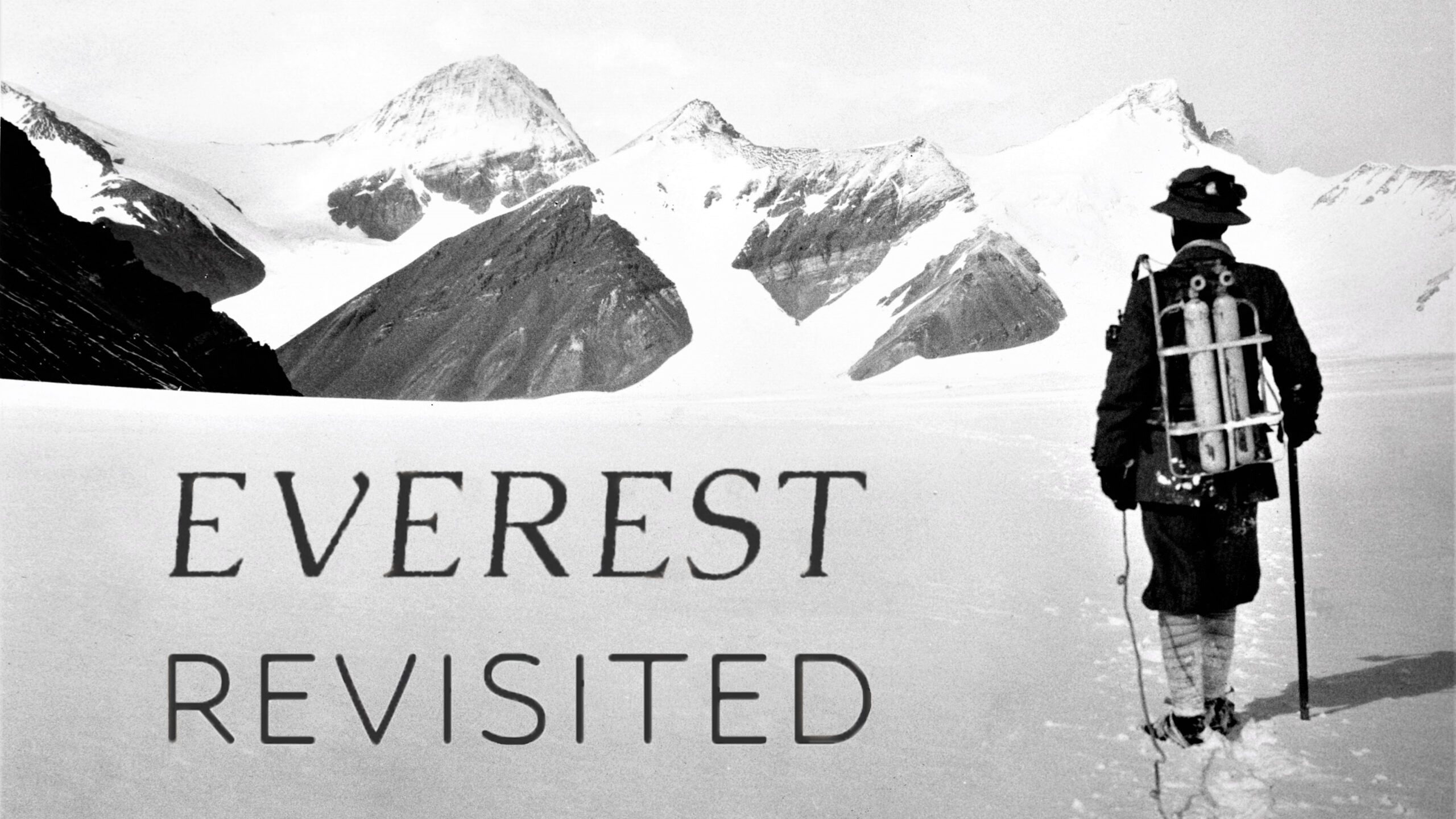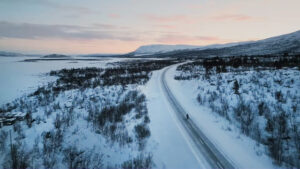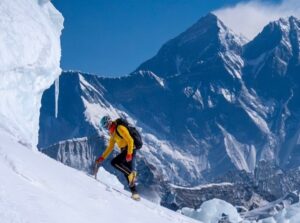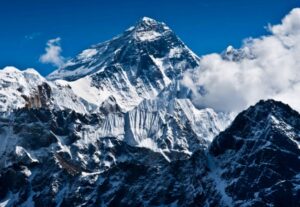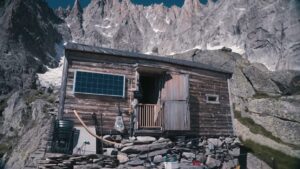A new film, Everest Revisited: 1924–2024, invites viewers to look beyond the headlines to consider what Everest has come to mean, both in the past and the present. The film, which was publicly released earlier this week, won the Jury Special Mention Award at the 2024 Kraków Mountain Festival and was runner-up for the Audience Choice Award at the 2024 London Mountain Film Festival.
The 41-minute documentary, produced in association with the Alpine Club and the Mount Everest Foundation, weaves together archival footage with analysis and reflection from some of the UK’s leading Everest enthusiasts.
Narrated compellingly by mountaineer Matt Sharman and anchored by the personal connection of Sandy Irvine’s great-niece, Julie Summers, Everest Revisited is less a dramatic retelling of Everest history and more a reflective journey through the mountain’s cultural and spiritual legacy.
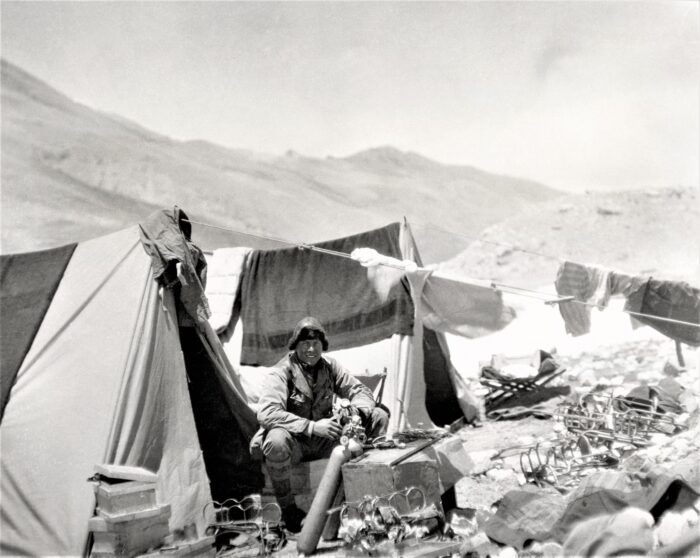
Sandy Irvine working on oxygen equipment in 1924. Photo: Bentley Beetham Collection
At the heart of the documentary are the expeditions of the 1920s, with particular focus on the ill-fated 1924 attempt by George Mallory and Sandy Irvine. With contributions from mountaineers and historians such as Rebecca Stephens, Leo Houlding, Stephen Venables, Chris Bonington, Krish Thapa, and Melanie Windridge, the film explores how these early attempts were shaped as much by imperial ambition and scientific curiosity as they were by the challenge of climbing itself.
A critical examination
Rather than idealise the past, the film examines it critically. It acknowledges the hierarchy embedded in British imperial attitudes, particularly toward the Sherpas and high-altitude porters who made these expeditions possible. The film highlights the essential, and often overlooked, contributions of figures like Karma Paul and Gyalzen Kazi, who bridged very different cultures. Porters like Paul and Kazi quite literally carried early Everest expeditions forward.
Everest Revisited also looks forward. Blending stories from climbers like former Gurkha Krish Thapa, who helped double-amputee Hari Budha Magar summit Everest in 2023, the film draws links between notions of historic heroism and modern questions of easy access and motivations. Despite the growing queues on Everest’s slopes and its increasingly commercial reputation, writer and climber Ed Douglas suggests that modern climbers may not be too dissimilar to those of the past.
“We tend to think that Everest is kind of somehow more complicated, more cynical, and less illustrious than it used to be. I think we need to look back at these expeditions with a more honest eye, because these are not simple, heroic people. These are people with the same motivations and the same, you know, concerns and the same complexities we have. They weren’t always honourable. They weren’t always perfect,” Douglas reflected.
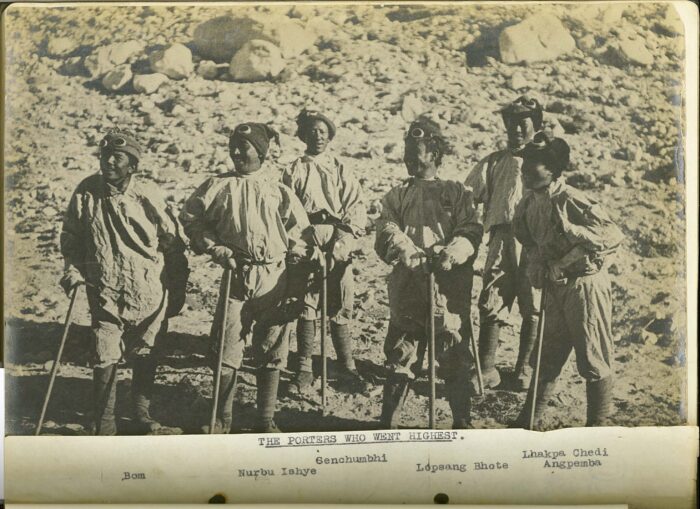
The porters who went to over 27,000ft (8,200m) in June 1924. They established and supplied the high-altitude camps that George Mallory and Sandy Irvine would use to make their attempt on the summit of Everest. They are dressed in wind-proof cotton smocks, woollen helmets, gloves, goggles, boots, and puttees issued to them by the expedition. The expeditions and much of the climbing were only possible due to the huge contribution of Indigenous workers. Photo: The Alpine Club
Emphasizing the unknown
Visually, the film integrates modern and archival footage of Himalayan landscapes with impactful interviews and primary artifacts, such as photos and equipment from early expeditions.
Rather than offering a final verdict on Mallory and Irvine’s fate, the film leaves room for mystery. It emphasizes the unknown. As climber Leo Houlding poignantly tells Irvine’s great-niece Julie Summers, “I hope we never find your great uncle and I hope we don’t find the camera. I hope that the mystery endures for another century.”
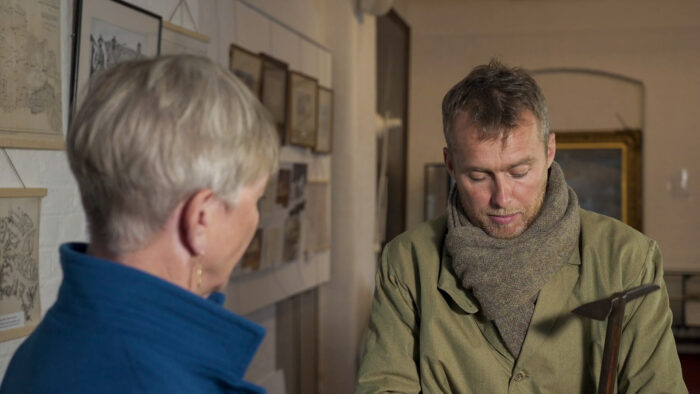
Julie Summers and Leo Houlding discuss Mallory and Irvine’s final attempt on the summit. Photo: The Alpine Club
Everest Revisited is a film about more than just mountaineering. It’s about memory and the shifting values we project onto the world’s highest mountain. The documentary will intrigue climbers, historians, and anyone drawn in by the enduring allure of the world’s highest mountain.
